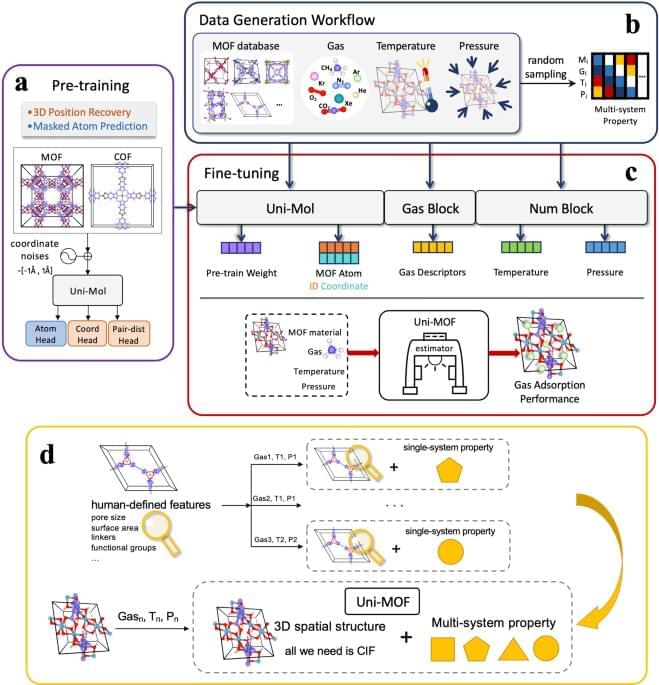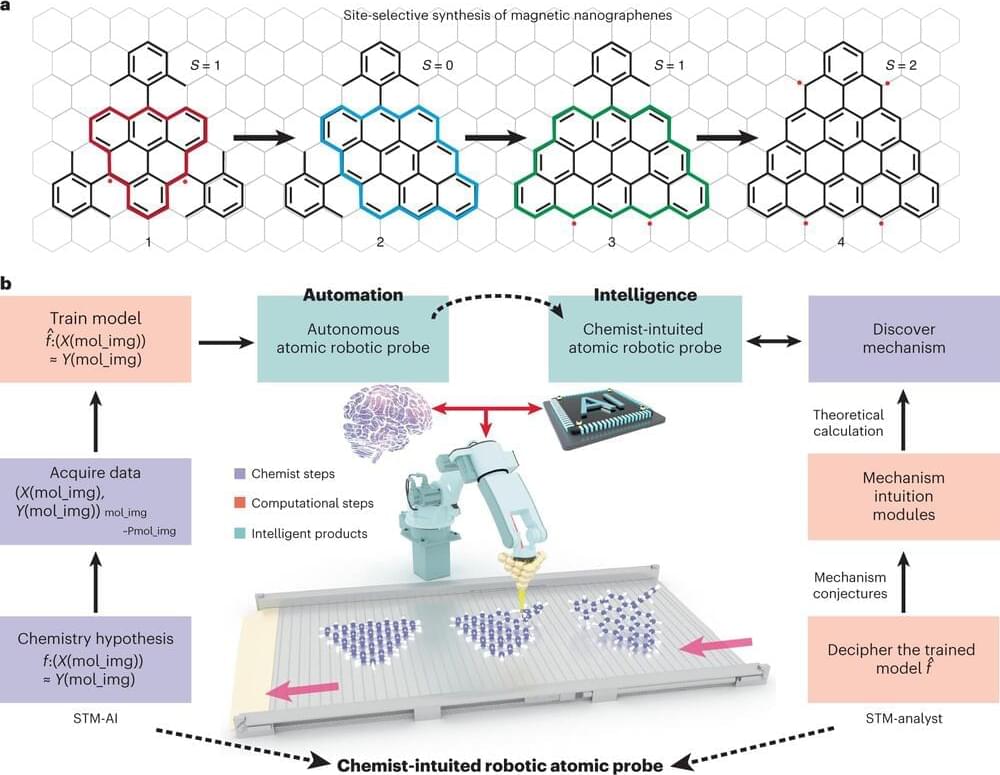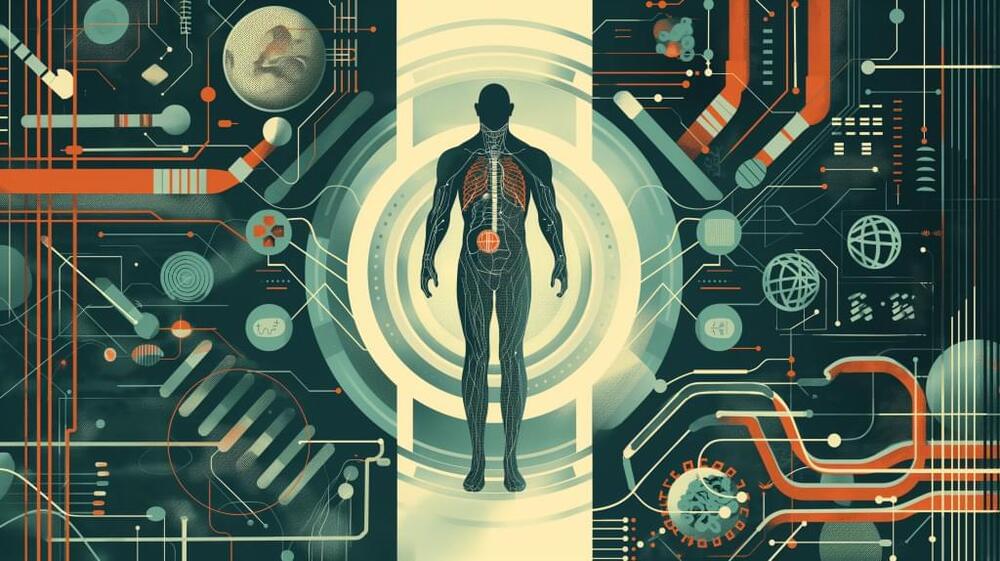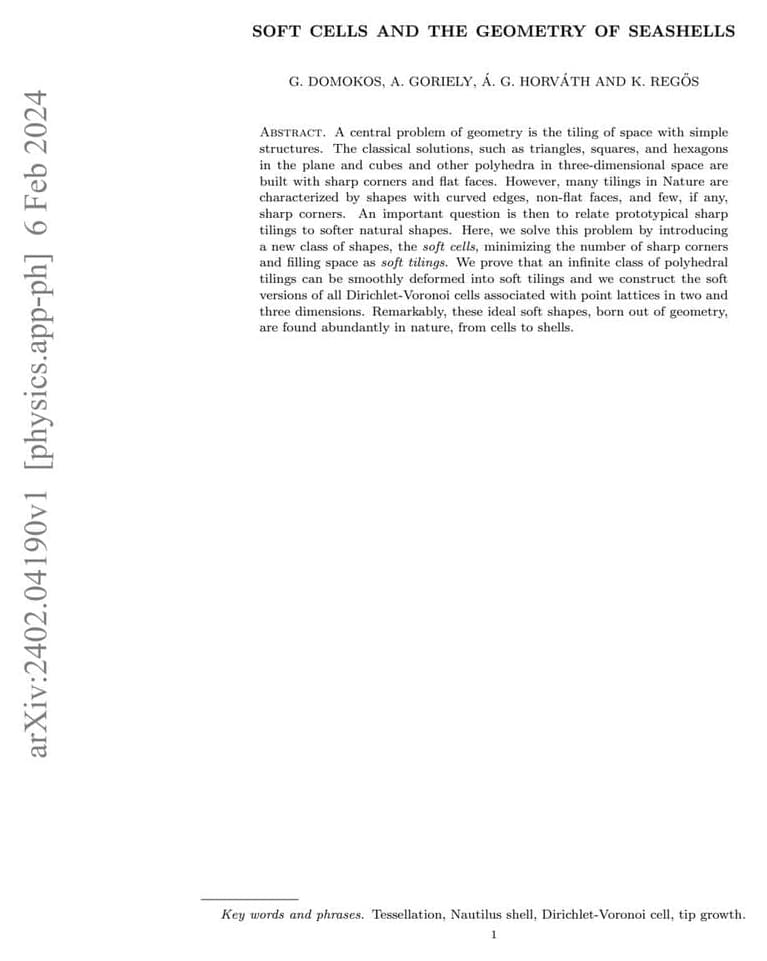Page 422
Mar 1, 2024
A comprehensive transformer-based approach for high-accuracy gas adsorption predictions in metal-organic frameworks
Posted by Dan Breeden in categories: materials, robotics/AI
Furthermore, the experimental values are introduced to correct the adsorption isotherms. For example, Fig. 3b shows the Langmuir adsorption isotherm obtained by fitting both the predicted and experimental adsorption data. While we use simulated datasets to address data scarcity, we can also properly introduce experimental values to correct adsorption isotherms, which helps a more quantitative prediction of adsorption performance at high-pressure where the gas-gas interaction becomes more significant. In Fig. 3b, one can observe that the corrected adsorption isotherms have a strong correlation with experimental adsorption capacity to some extent. The results exhibit that Uni-MOF not only has the ability to screen the adsorption performance of the same gas in different materials but also can accurately screen the adsorption performance of different gases in the same material (Fig. 3c, d) or at different temperatures (Fig. 3e, f).
In the foreseeable future, the intersection of Artificial Intelligence (AI) and materials science will necessitate the resolution of practical and scientific issues. Nonetheless, the attainment of process implementation by AI in the realm of machine learning techniques that entail copious amounts of data remains a formidable challenge, given the dearth of experimental data and the diverse array of synthetic technology and characterization conditions implicated. Our research has made a significant stride in materials science by incorporating operating conditions into the Uni-MOF framework to ensure data adequacy and enable screening functions that are consistent with experimental findings.
In order to showcase the predictive capabilities of Uni-MOF with regard to cross-system properties, five materials were randomly selected from each of the six systems (carbon-dioxide at 298 K, methane at 298 K, krypton at 273 K, xenon at 273 K, nitrogen at 77 K and argon at 87 K) contained in databases hMOF_MOFX_DB and CoRE_MOFX_DB, which have been thoroughly sampled in terms of temperature and pressure. The predicted and simulated values of gas adsorption uptake at varying pressures were then compared, with the results presented in Fig. 4a–f. Adsorption isotherms fitting from both Uni-MOF predictions and simulated values would artificially reduce visual errors. In order to eliminate data bias, adsorption isotherms in all cases were obtained only by simulated values. It is evident that, due to the fact that the adsorption isotherms were obtained purely through simulated values, the predicted values of adsorption uptake generated by Uni-MOF for the hMOF_MOFX_DB and CoRE_MOFX_DB databases align closely with the simulated values across all cases. This finding is further supported by the high prediction accuracy demonstrated in Fig. 2a, b.
Mar 1, 2024
Seven years later, what can we make of our first confirmed interstellar visitor?
Posted by Dan Breeden in category: space travel
It wasn’t aliens, but the first interstellar object found in our solar system still has much to teach us about the cosmos.
Mar 1, 2024
Discover the universe’s oldest black hole, defying the mysteries of space
Posted by Dan Breeden in categories: cosmology, innovation
Embark on a cosmic journey as we explore the latest breakthrough in black hole research. Recently, scientists revealed the discovery of the oldest black hole ever observed.
Mar 1, 2024
Producing quantum materials with precision, with the help of AI
Posted by Dan Breeden in categories: chemistry, quantum physics, robotics/AI
A team of NUS researchers led by Associate Professor Lu Jiong from the Department of Chemistry and Institute for Functional Intelligent Materials, together with their international collaborators, have developed a novel concept of a chemist-intuited atomic robotic probe (CARP).
This innovation, which uses artificial intelligence (AI) to mimic the decision-making process of chemists, enables the manufacturing of quantum materials with unrivaled intelligence and precision for future quantum technology applications such as data storage and quantum computing.
Open-shell magnetic nanographene is a type of carbon-based quantum material that possesses key electronic and magnetic properties that are important for developing extremely fast electronic devices at the molecular level, or creating quantum bits, the building blocks of quantum computers. The processes used to develop such materials have progressed over the years due the discovery of a new type of solid-phase chemical reaction known as on-surface synthesis.
Mar 1, 2024
Focal Point on Quantum computing in Japan
Posted by Dan Breeden in categories: computing, quantum physics
Quantum computers are set to transform computing and society with their ability to solve problems that are currently intractable.
Mar 1, 2024
Peter Diamandis Embraces the Sci-Fi of Life Extension
Posted by Dan Breeden in categories: life extension, Peter Diamandis
Now in his 60s, the physician and entrepreneur is directing tens of millions of dollars at far-out tech to let him and others live twice as long, or longer.
Mar 1, 2024
‘Can control computer mouse with thoughts’: Says Elon Musk on Neuralink’s first human patient as he successfully recovers
Posted by Dan Breeden in categories: biotech/medical, computing, Elon Musk, neuroscience
Elon Musk disclosed that a human patient implanted with a brain chip from the company has fully recovered and demonstrated the ability to control a computer mouse using their thoughts.
Mar 1, 2024
‘Oceans are hugely complex’: modelling marine microbes is key to climate forecasts
Posted by Logan Thrasher Collins in categories: biological, chemistry, climatology, computing
An interesting exploration of the importance of oceanic microorganisms to biogeochemical processes, how existing computational climate models do not adequately capture the complexity introduced by these microbes, and suggestions for future directions in climate modeling that better incorporate the…
Microorganisms are the engines that drive most marine processes. Ocean modelling must evolve to take their biological complexity into account.


















